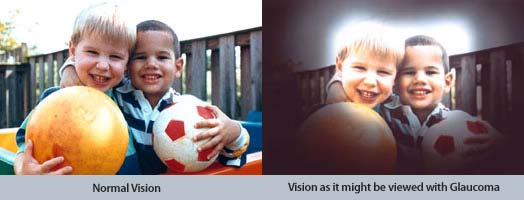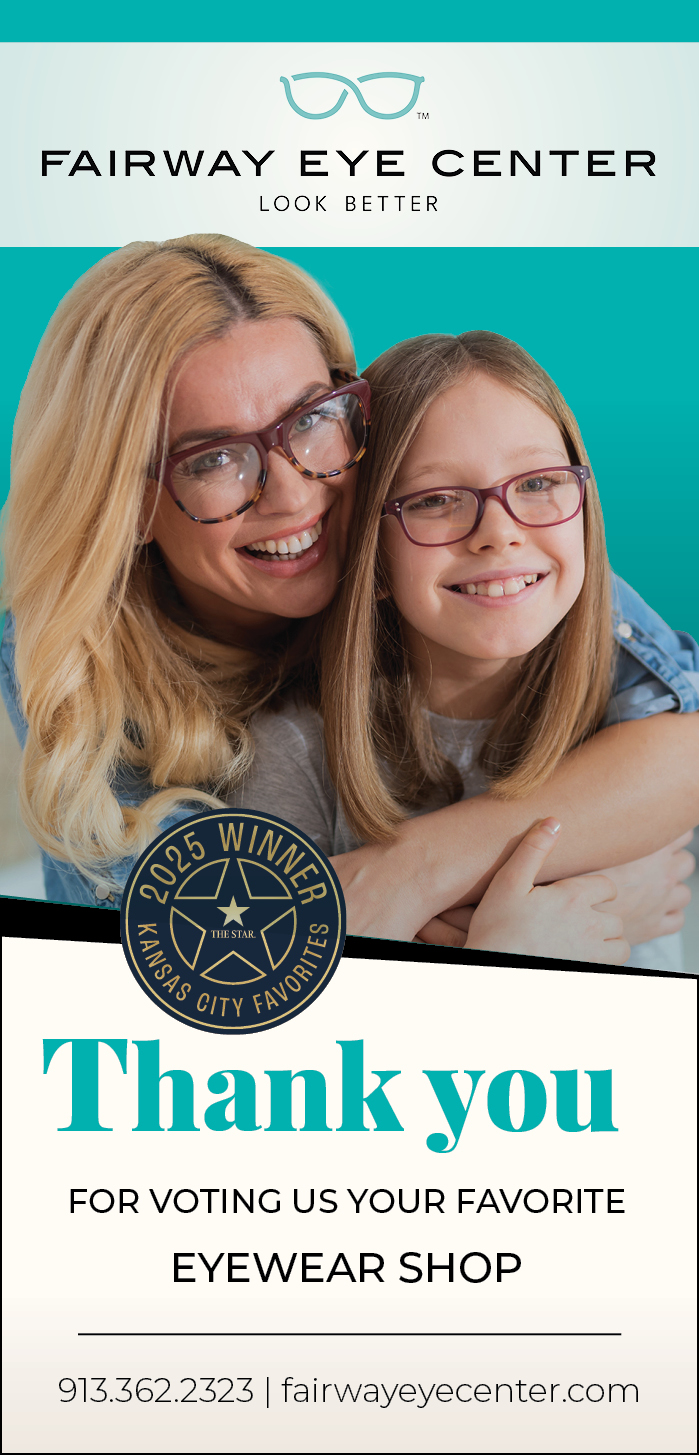Eye Health & FAQs
As primary eye health care providers, we examine, diagnose, treat and manage diseases and disorders of the entire visual system. Below is information concerning several eye conditions or diseases. Please contact us for more detailed information and to request an appointment.

Glaucoma is a collection of disorders that result in progressive damage to the optic nerve, which is what connects the eye to the brain. This is typically thought of as a “high pressure” disease, referring to the intraocular
pressure, but elevated intraocular pressures are not the only indicator.
Glaucoma typically affects peripheral vision first but can progress to total blindness if left untreated. We screen for glaucomatous changes at every comprehensive eye exam.
To learn more:
https://www.aoa.org/healthy-eyes/eye-and-vision-conditions/glaucoma?sso=y
Myopia, or “nearsightedness” means blurry distance vision. This occurs when light entering the eye focuses in front of the retina. This can easily be corrected with glasses or contact lenses. There are some risk factors associated with being highly myopic, including retinal tears and detachments; but new treatments can slow or even stop myopic progression.
To learn more:
https://www.aoa.org/healthy-eyes/eye-and-vision-conditions/myopia
Astigmatism occurs when the lens and cornea are irregularly shaped. This distorts how light enters the eye and causes blurred vision at distance and near.
This condition can be corrected with glasses or contact lenses.
To learn more:
https://www.aoa.org/healthy-eyes/eye-and-vision-conditions/astigmatism
 A cataract is clouding of the lens inside the eye. This finding is typically age related and caused by the UV exposure from the sun. Cataracts are a progressive condition, but after they start to affect vision, they can be removed with an outpatient procedure. We check for cataract change during every comprehensive eye exam.
A cataract is clouding of the lens inside the eye. This finding is typically age related and caused by the UV exposure from the sun. Cataracts are a progressive condition, but after they start to affect vision, they can be removed with an outpatient procedure. We check for cataract change during every comprehensive eye exam.
To learn more:
https://www.aoa.org/healthy-eyes/eye-and-vision-conditions/cataract
Floaters are small specks or strands that float in the vitreous, the jelly-like material that fills the eye. They are typically seen in high contrast environments, like these snow or bright blue sky. A few floaters at a time are normal, but if you ever see hundreds of them at once or a large one that isn’t moving, contact us immediately.
To learn more:
https://www.aoa.org/healthy-eyes/eye-and-vision-conditions/floaters-and-spots?sso=y
Macular degeneration occurs when the cells in the macula, the central vision portion of the retina, are damaged. This can result in permanent central vision loss. Many factors contribute to macular degeneration, including UV exposure, diet, genetics, and tobacco use. There are two types of macular degeneration: dry macular degeneration when the macula is scarred without any leaking or bleeding, or wet macular degeneration, when the macula is damaged by significant leaking and bleeding. We check for changes related to macular degeneration at every comprehensive eye exam.
To learn more:
https://www.aoa.org/healthy-eyes/eye-and-vision-conditions/macular-degeneration?sso=y
Diabetic Retinopathy occurs when the blood vessels in the retina leak or when areas of the retina swell. This is related to elevated blood sugar and can be vision threatening. An annual dilated eye exam is recommended for all patients with diabetes in order to monitor for these changes.
To learn more:
https://www.aoa.org/healthy-eyes/eye-and-vision-conditions/diabetic-retinopathy?sso=y
Presbyopia is the inability of your eyes to focus on near objects. This is an age-related condition that typically occurs in your early forties and can be corrected with glasses or contact lenses.There is no way to prevent this change.
To learn more:
https://www.aoa.org/healthy-eyes/eye-and-vision-conditions/presbyopia
Hyperopia, or “farsightedness” means blurry near vision. This occurs when light entering the eye focuses behind the retina. Often this can be corrected with a pair of reading glasses when viewing near objects, but If it is significant enough full-time glasses or contact lenses can be necessary.
To learn more:
https://www.aoa.org/healthy-eyes/eye-and-vision-conditions/hyperopia
Information provided courtesy of the American Optometric Association.
Eye disease images sourced from the National Eye Institute.
FREQUENTLY ASKED QUESTIONS
A comprehensive adult eye and vision examination may include, but is not limited to, the following tests: visual acuity tests, cover test, retinoscopy, slit-lamp examination, glaucoma test, pupil dilation, and a visual field test. The signs and symptoms of the individual patient, along with the professional judgment of the doctor, may significantly influence the testing done. You’ll leave your exam with an updated glasses and/or contacts prescription.
During the course of the exam one of our optometrists will evaluate your glasses prescription with a refraction to ensure you are seeing your best. Your anterior and posterior health will also be evaluated to check for cataracts, glaucoma, macular degeneration, diabetic retinopathy, and numerous other ocular conditions. If you choose to do retinal photography or optical coherence tomography your doctor will walk you through the findings to give you a better understanding of your ocular health and how it relates to your systemic health.
Retinal Photography
We utilize digital retinal photography to detect ocular and systemic disease; including diabetes, glaucoma, macular degeneration, and high blood pressure. The images also prove a baseline for the health of you eye that, when compared year to year, can aid in identifying subtle changes over time. Our doctors strongly recommend digital retinal photography for all patients every year.
OCT
In addition to retinal photography, we also offer an advanced technology known as optical coherence tomography (OCT), which utilizes light waves to take a cross-section image of the layers of the retina. With OCT our doctors can see each of the distinctive layers of the retina, which allows them to assess changes deep in the retinal tissue.
Aside from updating my prescription, are vision exams an important part of preventative health care?
Yes! Many eye and vision problems have no obvious signs or symptoms. As a result, individuals are often unaware that problems exist. Early diagnosis and treatment of eye and vision problems are important for maintaining good vision and eye health, and when possible, preventing vision loss.
- Don’t overexert your eyes.
- Don’t drink excessive alcohol or coffee.
- Don’t feel intimidated or nervous. We have modern technology that can make your visit quite pleasant.
- Arrive early to fill out any paperwork that might be needed.
- Your current glasses, sunglasses, and contacts
- A list of current medications—and not just prescription medications. Your eye doctor can look at the list and determine if your medications could be affecting your vision
- The name and address of your primary care doctor
- If your appointment includes having your pupils dilated, bring sunglasses. (or we will provide some for you)
- Your vision insurance information
- Your driver’s license or state ID
- A list of the questions you want to ask your doctor


